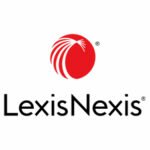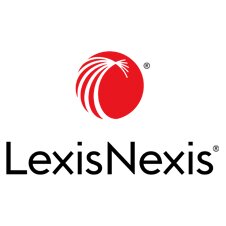Industry interview with LexisNexis: Keep it real time
This article was originally featured as an industry analysis in the September 2017 Briefing business intelligence supplement. To read the issue in full, download the supplement.
From paper-light working to advice by app, the legal industry is one of many seeing efficiency gains thanks to a period of digital transformation.
Those should transform, in turn, into measurable increases in client service and satisfaction – but Andy Lilley, new product director at LexisNexis Enterprise Solutions, says one of the best digital decisions you could make is moving to a new model for managing your internal data. “One big opportunity for law firms today is joining up sets of data that would traditionally be found in a multitude of different systems – for example, practice management with your financial and talent information.
“Joining up silos of information – bringing all your business intelligence together from across the enterprise – empowers users to be more clientfacing and responsive to clients’ changing needs, and ultimately to win more business.”
That’s the enterprise resource planning (ERP) model in a nutshell. And the scale of the gains is greater with another advance in digital transformation – moving that mass of information to the cloud.
“It’s the scalability, flexibility and security of the cloud offering that ensures all those systems are continually up to date,” explains Lilley. And the reliability of data is very important, as a key benefit of storing all the firm’s management data in the same place is enabling people to make faster and better decisions.
Decisions, decisions
Cloud consumption of solutions changes the playing field for customers – including ERP system LexisOne, which combines tasks such as time recording, matter management and billing with finance, HR and talent management reporting, explains Lilley.
Having those data sets aligned with business processes in the ERP enables two types of business decision. Managers can track people’s personal development against goals for more effective succession planning, but also gain greater understanding “of which people have the best combined sets of skills to work on any given client, matter, project or implementation,” he says.
Together with time and billing information, that level of insight from across the firm is particularly important for ensuring that an increasingly global and agile workforce is deployed to best effect, as and when opportunities arise.
Fortunately, another ERP advantage is the speed at which raw information, once found, is processed to provide something immediately useful to the individual, whether a fee earner, relationship manager or secretary.
“One of the biggest benefits to the user is real-time information from right across the enterprise. Having LexisOne in the cloud cuts overheads – cost-effective in itself – but it also means reporting and analytics can occur as part of the solution,” says Lilley. “There’s no longer a need for segregation off to a data warehouse, where it takes days to extract the insight, by which time it’s often already out of date – not to mention out of the hands of the users.”
And timeliness is just one aspect of overall user experience – the factor that enables a firm’s people to work the way the firm also needs them to if it’s to embrace ideas like agile working to increase engagement and retention. “Employees want something familiar and intuitive – a system they genuinely want to work with because it helps them to perform,” he explains.
Smarter choices
Lilley arrives at LexisNexis with both ERP and corporate payments experience across many sectors including financial services, but says what drives him is always how his own clients – in this case the law firm’s groups of users – want to work.
“In a world of digital transformation user experience becomes a huge factor in any product’s success,” he says. “We use apps all day, every day – social media, navigation and online banking are just the most obvious – and there’s a choice. We choose the ones that work for us, and not the ones that force us to work in a particular way.”
That’s the thinking that led the company to partner with Microsoft Dynamics 365 for finance and operations on the foundations of LexisOne. The familiarity of working with Microsoft makes any new processes easier to pick up.
On the other hand, you can’t just give clients what they want. We all know about Henry Ford’s (almost certainly apocryphal) ‘faster horses’.
“Even more important than what clients say they want is helping them to think one step ahead to stay competitive,” says Lilley. “That needs an understanding of the root problems behind what firms request, as well as what their clients request of them.”
It also requires looking beyond lawyers to the broader base of business services performance that makes up profitable and competitive work.
For example, LexisNexis follows an agile methodology, which includes partnering and engaging with firms to identify several “super users”. The idea is that these people can represent the experiences and views of each business area, from HR and finance teams to the fee earner.
Like cloud, agile implementation also makes for a faster and more flexible experience. “It ensures that each group of users only has access to what they need,” says Lilley.
Working with customers, LexisNexis considers the personas for these groups. HR, for example, involves two personas based on the data that different roles need to see to perform at their absolute peak.
“By joining talent and human capital management in ERP we’re enabling employees to track and influence their own career development and performance objectives, but also HR business partners to recognise where and how talent develops fastest and most effectively.”
In a future of yet more digital transformation – integrating some form of machine learning into the equation – combinations of data could even lead to resourcing decisions based on global teams with the highest probability of achieving the highest success rate. “But with tools such as Microsoft Power BI and machine learning to better model, analyse and visualise data the way end users want it, we can certainly drive even more informed, data-driven decisions in real time,” says Lilley.
Of course, with more decisions at more fingertips, security needs to be a competing priority. Or does it? “The protective power of 3,500 security professionals is something any in-house solution could only dream of,” says Lilley. So, being cloud-native with Microsoft Azure – as LexisOne is – ought to mean one less area of management data to lose sleep about.



